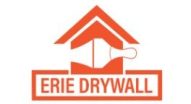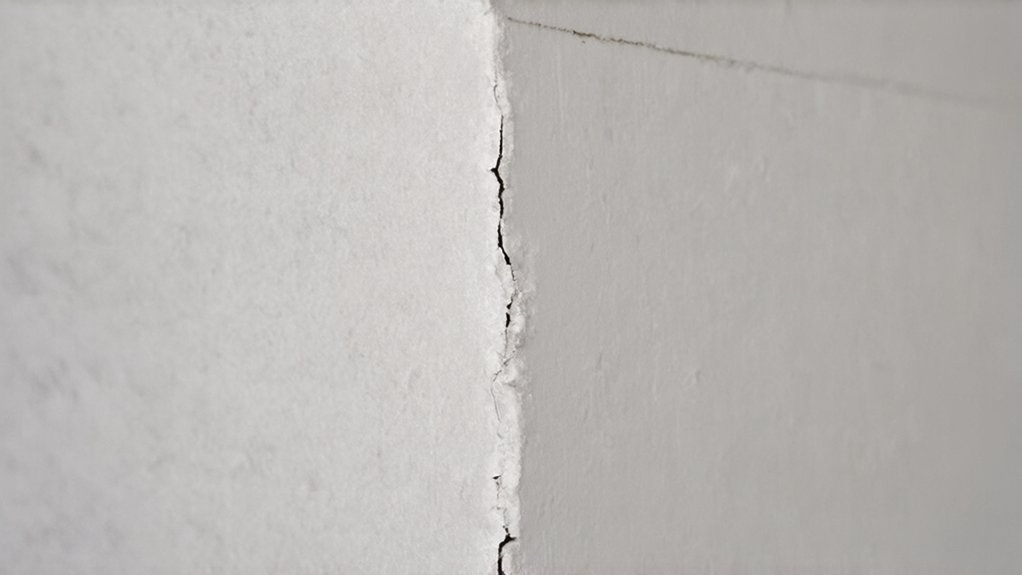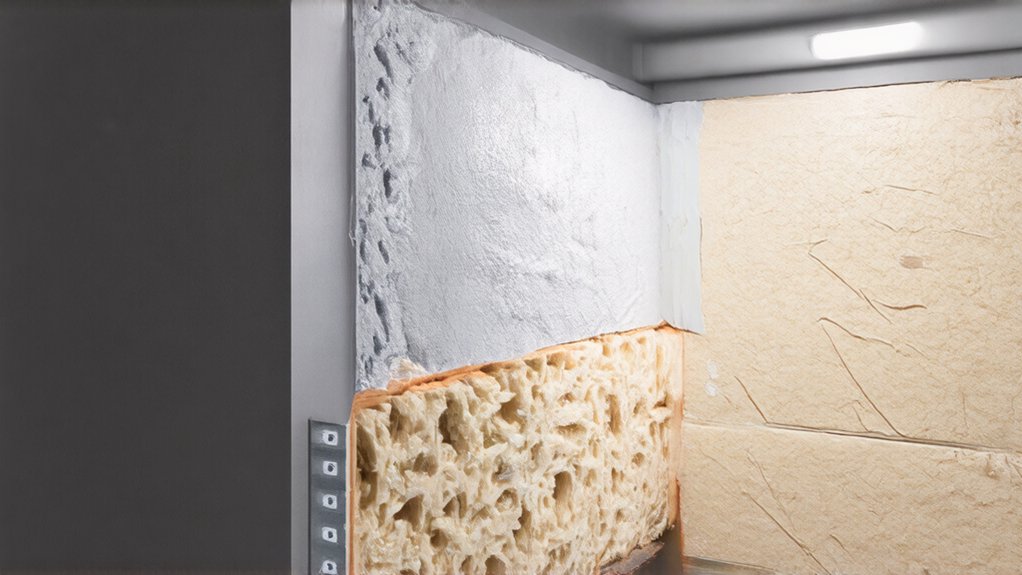Seasonal temperature changes can wreak havoc on your home's drywall joints. As heat rises and falls, your walls expand and contract, creating stress at seam connections. You'll likely notice hairline cracks, soft spots, and slight bulging, especially near corners and ceiling joints. These temperature-induced shifts can compromise your wall's structural integrity and aesthetic appeal. Understanding these patterns helps you protect your home's surfaces and catch potential issues early. Want to learn more about prevention?
The Science of Thermal Expansion in Building Materials
Most building materials aren't static; they're versatile substances that respond to temperature changes through a fascinating process called thermal expansion. As temperatures fluctuate, materials like drywall expand and contract, with each substance having its unique coefficient of thermal expansion. Drywall installation techniques can help mitigate the potential issues caused by thermal expansion in building materials. You'll notice that different building components respond differently to heat and cold, which can affect your home's structural integrity. Understanding these thermal insulation properties helps you anticipate potential issues and maintain your living space. Knowing how materials behave can prevent unexpected cracks, shifts, and potential damage during seasonal temperature changes.
How Summer Heat Stresses Drywall Joints
When summer's scorching temperatures hit, your home's drywall becomes vulnerable to significant stress and potential damage. Thermal variation effects can cause forceful changes in your walls' structural integrity, especially at joint connection points.
You'll notice that these areas are most susceptible to expansion and contraction as heat intensifies. Joint expansion concerns become particularly critical during prolonged periods of high temperatures. Your drywall might develop subtle cracks or hairline fractures that, if left unaddressed, could compromise your home's aesthetic appeal and structural soundness.
Drywall repair professionals in Erie, PA recommend addressing these temperature-related issues promptly to prevent more extensive damage.
Understanding these temperature-related fluctuations helps you protect your living space.
Winter's Cold Impact on Wall Structural Integrity
As winter's frigid temperatures descend, your home's drywall experiences a dramatically different set of structural challenges compared to summer. Wall contraction patterns intensify when cold settles in, causing subtle but significant stress on your interior walls.
Your home's thermal insulation quality becomes key during these months, directly impacting how well your drywall manages temperature-related strain. Cracks might develop along joints where materials respond differently to dropping temperatures, potentially compromising your wall's structural integrity.
Understanding these seasonal changes helps you proactively protect your living space, preventing costly repairs and maintaining your home's comfort and appearance.
Identifying Early Signs of Drywall Joint Damage
Because drywall joint damage can quietly develop over time, homeowners should learn to recognize its subtle warning signs before minor issues escalate into major structural problems. Watch for hairline cracks near seams, especially where walls meet ceilings or corners connect.
Seasonal moisture changes can cause joints to expand and contract, creating stress points that compromise wall integrity. During your joint flexibility assessment, gently press along drywall seams to detect soft spots or slight bulging. If you notice uneven surfaces, discoloration, or small fractures, these might signal underlying joint deterioration that requires professional evaluation and potential repair.
Preventative Measures to Protect Drywall Seams
Protecting your drywall seams requires proactive maintenance and strategic environmental management to prevent potential damage from seasonal temperature fluctuations. You'll want to focus on joint reinforcement techniques that minimize expansion and contraction risks.
Applying high-quality sealant can help create a more resilient barrier against temperature-related stress. Consider using flexible joint compounds that accommodate slight movements and prevent cracking. Insulating your walls properly and maintaining consistent indoor humidity levels will also reduce the likelihood of seam damage.
Professional Repair Techniques for Temperature-Induced Damage
Three primary repair techniques can effectively address temperature-induced drywall damage, helping homeowners restore their walls' structural integrity and appearance.
Your first step involves a thorough joint assessment to identify the extent of cracks and potential structural weaknesses. Professional contractors recommend carefully cutting out damaged sections, applying mesh tape, and using specialized joint compound to seamlessly repair affected areas.
The repair workflow typically includes cleaning the damaged region, cutting precise patches, applying reinforcement layers, and sanding for a smooth finish. By following these expert techniques, you'll successfully rehabilitate your walls and prevent future temperature-related damage.
Long-Term Strategies for Maintaining Drywall Quality
While temperature fluctuations can wreak havoc on your drywall, strategic maintenance techniques will help you preserve its quality and prevent costly repairs. Implementing seasonal maintenance routines is essential for protecting your walls against temperature-induced stress.
You'll want to inspect your drywall joints twice yearly, focusing on areas prone to expansion and contraction. Joint reinforcement strategies, like using flexible tape and high-quality compound, can greatly reduce cracking risks. By proactively monitoring your walls and addressing minor issues early, you'll maintain your home's structural integrity and aesthetic appeal, saving money and preventing more extensive damage down the line.
Frequently Asked Questions
Can Drywall Cracks Always Be Repaired, or Do They Require Full Replacement?
You'll often repair minor drywall cracks, especially if they're small. Different types of drywall adhesives help patch minor damage. However, extensive cracking from differential expansion rates might require full wall replacement for structural integrity.
How Expensive Are Professional Drywall Joint Repairs Caused by Temperature Changes?
You'll find professional drywall joint repairs due to seasonal temperature variations can cost between $300-$800, depending on damage extent. Don't worry—skilled contractors can assess and provide accurate cost estimates that'll help you budget effectively.
Will Homeowners Insurance Cover Drywall Damage From Seasonal Temperature Fluctuations?
Your home warranty might not cover drywall damage from seasonal climate variations. Most policies exclude gradual wear and seasonal shifts. You'll likely need to pay out-of-pocket for repairs caused by natural temperature fluctuations in your home.
Are Certain Home Locations More Prone to Drywall Joint Temperature Stress?
You'll find homes in regions with extreme temperature swings are more vulnerable. Your home's thermal expansion factors and insulation quality greatly/immensely/substantially influence drywall joint stress, especially in areas with dramatic seasonal temperature fluctuations.
Can DIY Homeowners Successfully Repair Minor Temperature-Induced Drywall Joint Issues?
You can tackle minor drywall joint issues with DIY repair methods. Use joint expansion techniques like flexible spackle and mesh tape. Don't be intimidated—with patience and the right tools, you'll restore your walls' smooth appearance confidently.



